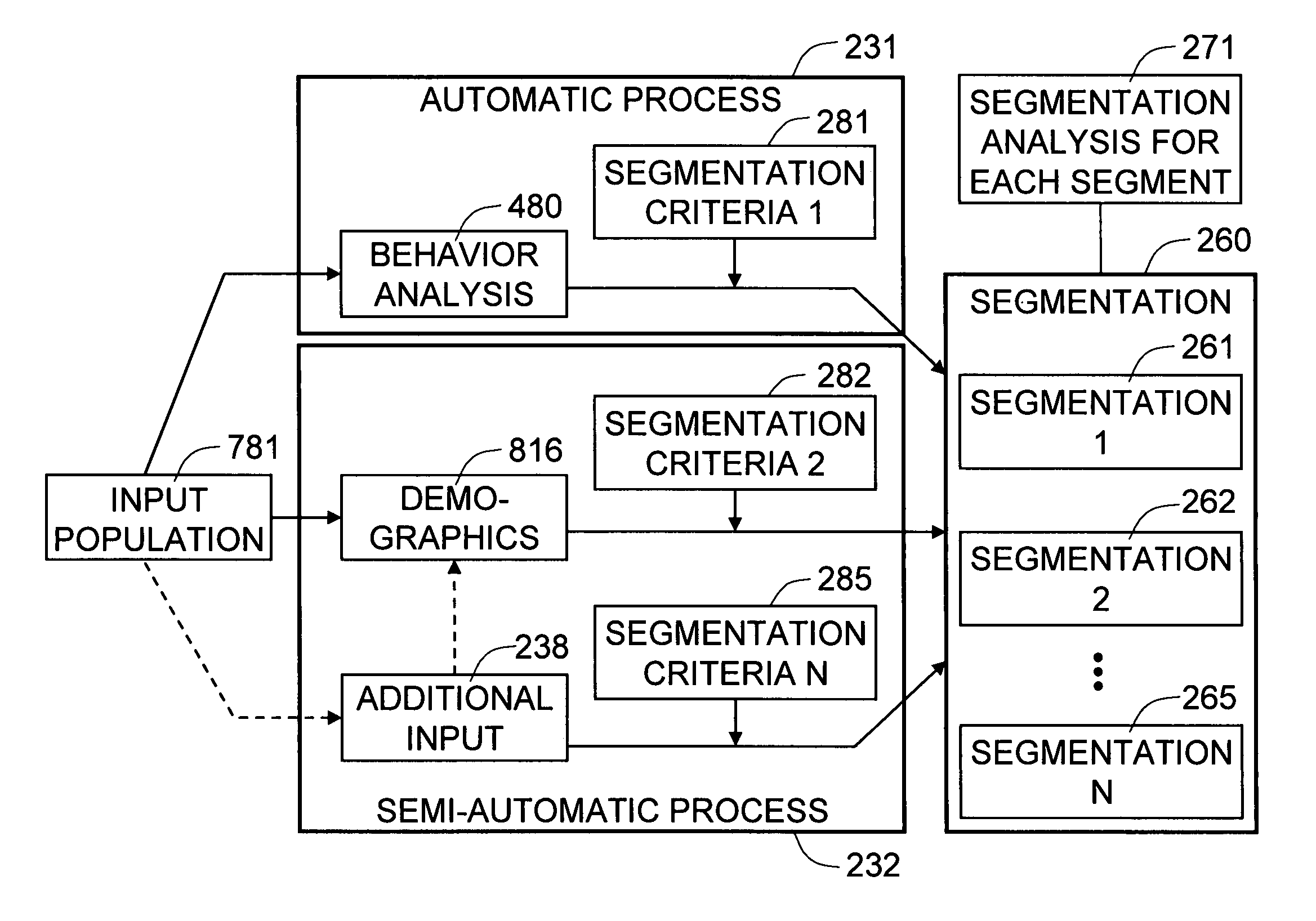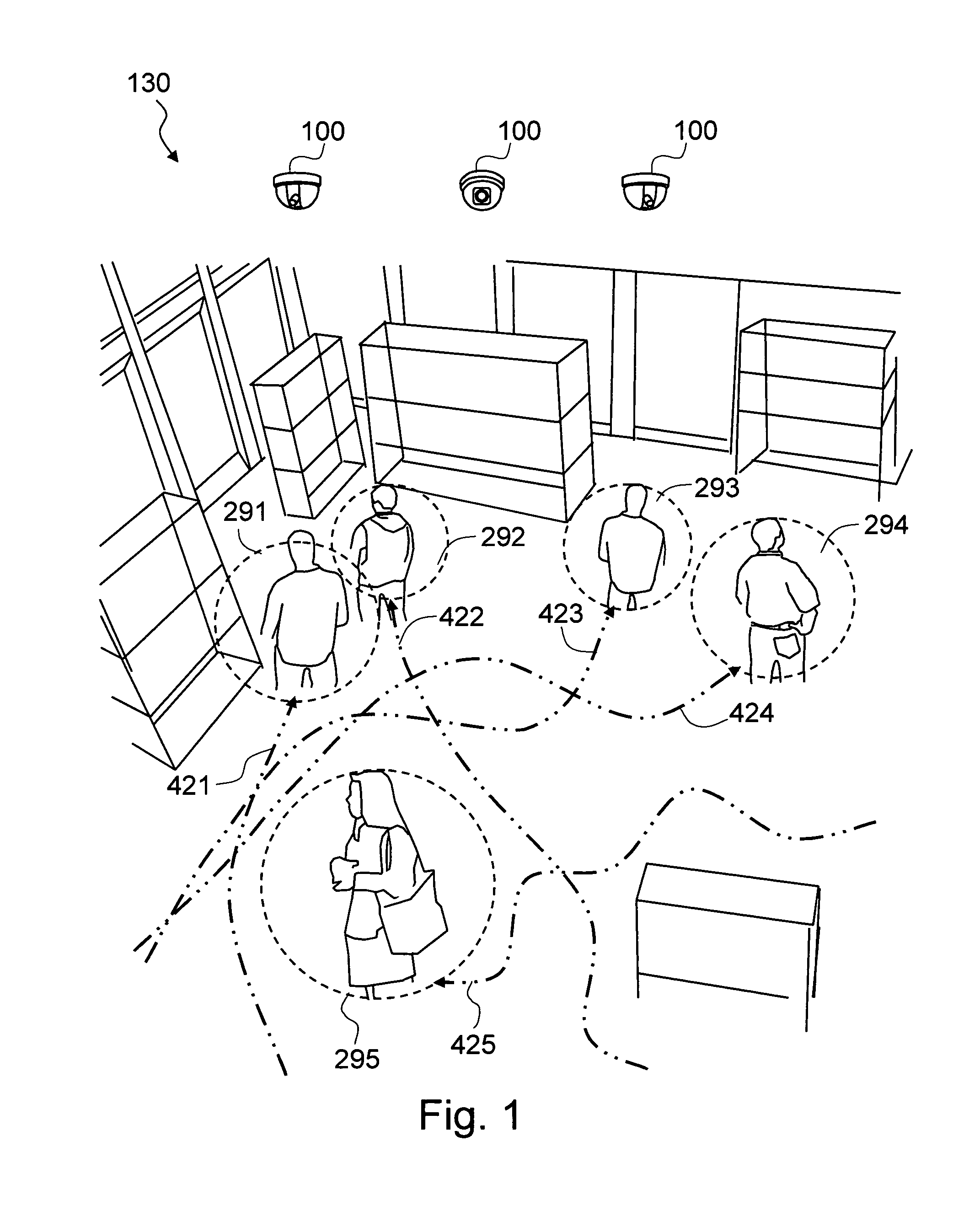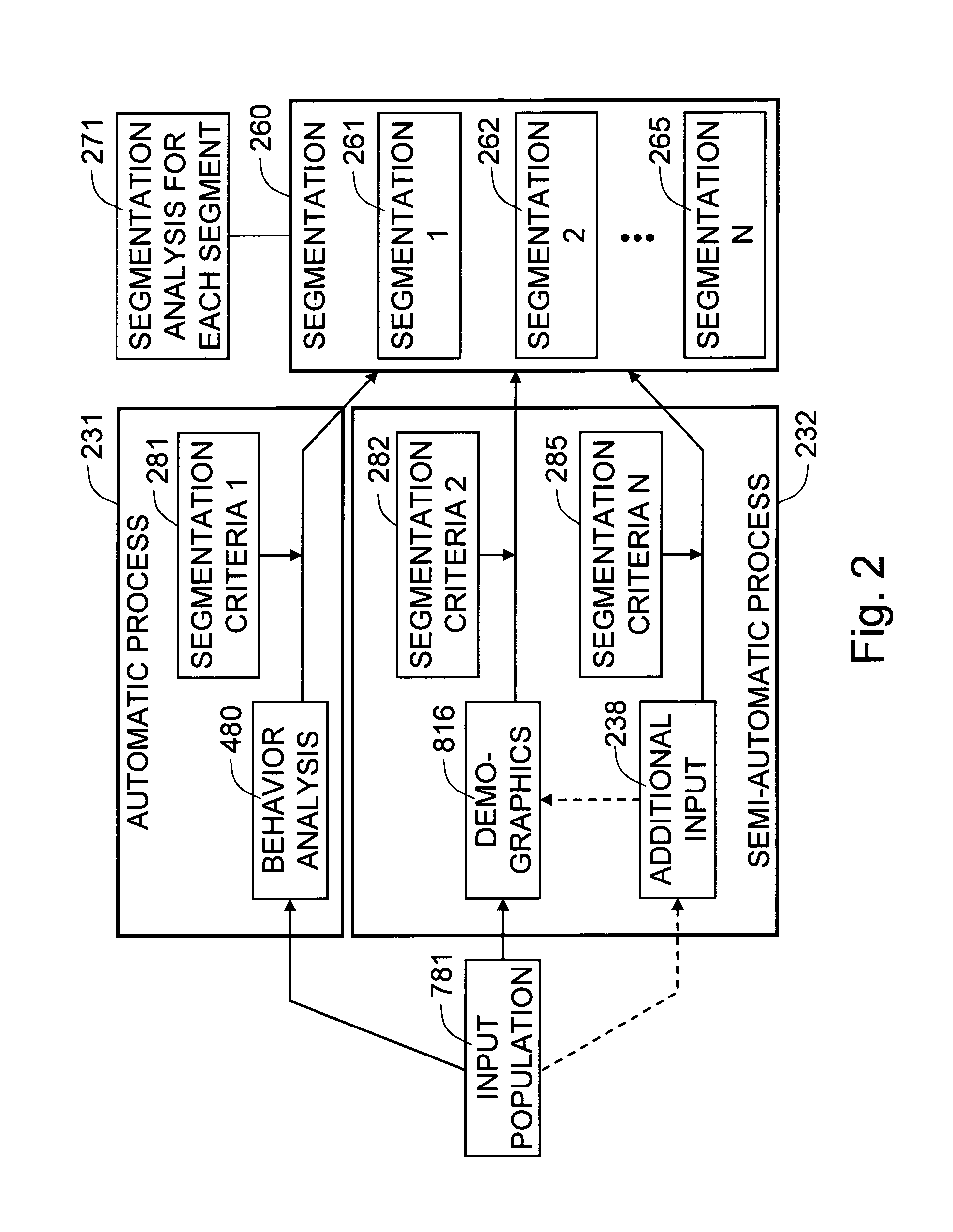Method and system for segmenting people in a physical space based on automatic behavior analysis
a technology of automatic behavior analysis and physical space, applied in image analysis, image enhancement, instruments, etc., can solve the problems of inability to efficiently track all shoppers in such cases, inability to efficiently input manual input by human operators/users, and inability to efficiently track shoppers in such cases. , to achieve the effect of a new level of access to behaviors and characteristics, and analytic and optimization of business establishment performan
- Summary
- Abstract
- Description
- Claims
- Application Information
AI Technical Summary
Benefits of technology
Problems solved by technology
Method used
Image
Examples
Embodiment Construction
[0066]FIG. 1 is an overview of a preferred embodiment of the invention, where the present invention segments a plurality of persons based on the automatic video-based behavior analysis in a physical space.
A Preferred Embodiment
[0067]The processes are based on a novel usage of a plurality of computer vision technologies to analyze the behavior of the persons from the plurality of input images. It is an objective of the present invention to efficiently handle complex human behavior from video sources utilizing a plurality of computer vision technologies, such as person detection and tracking, in a preferred embodiment.
[0068]As shown in FIG. 1, the present invention captures a plurality of input images of the persons in the physical space 130 by a plurality of means for capturing images 100. Then, the present invention processes the plurality of input images in order to track and analyze the behavior of the persons, such as shopping behavior. The present invention segments each of the ...
PUM
 Login to View More
Login to View More Abstract
Description
Claims
Application Information
 Login to View More
Login to View More - R&D
- Intellectual Property
- Life Sciences
- Materials
- Tech Scout
- Unparalleled Data Quality
- Higher Quality Content
- 60% Fewer Hallucinations
Browse by: Latest US Patents, China's latest patents, Technical Efficacy Thesaurus, Application Domain, Technology Topic, Popular Technical Reports.
© 2025 PatSnap. All rights reserved.Legal|Privacy policy|Modern Slavery Act Transparency Statement|Sitemap|About US| Contact US: help@patsnap.com



